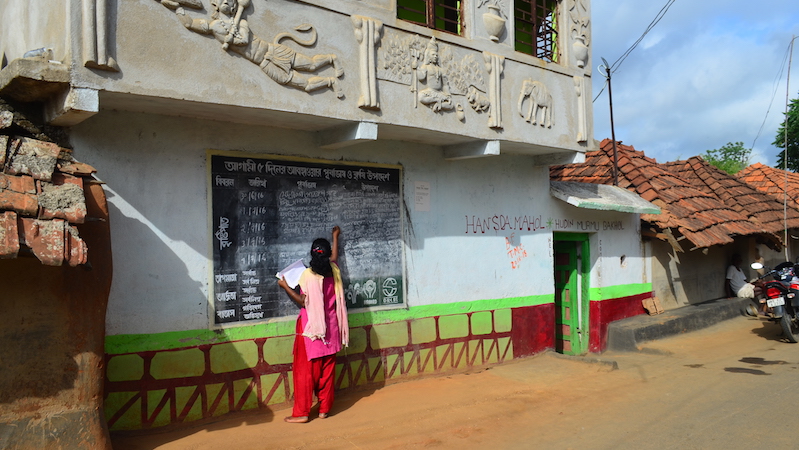Automated weather stations, data collection and organic farming science – mixed with indigenous knowledge and traditions – are helping Indian farmers work with an increasingly unpredictable rainy season.
A weather forecasting project in the north-eastern state of West Bengal aims to collect data that farmers can generate into five-day forecasts. Unlike the usual regional forecasts, transmitted by text message or on television, here people discuss their interpretations of the data to create community-specific forecasts that are written on a chalk board in the village.

The automated weather stations track wind speed and direction, while volunteers record the temperature, humidity and rainfall every day. The Development Research Communication and Services Centre, which is leading the project, also creates “agro advisories” to accompany the forecasts. These warn farmers about problems such as fruit fly attacks, for which they’re advised to spray their crops with a mix of neem oil, water and bar soap.
“Because you have the data, it allows people to have their own understanding and sense of whether forecasts are accurate, and allows them to generate the data themselves,” said Linus Kendall, a technical consultant working with the Development Research Communication and Services Centre. “Then you’re building the capacity to look at seasonal forecasts and even longer-term, which is what you need with climate change.”
It’s an example of how farming communities in India, and around the developing world, are combining science and technology to adapt to the effects of climate change – while shunning less helpful innovations such as hybrid seeds and chemicals.
The monsoon season in West Bengal has grown fickle with climate change, with heavy rainfall and dry gaps, said Kendall. The forecasts can help farmers judge whether it will rain enough to flood their rice fields when it’s time to transplant the seedlings, and the best time to cut and dry the harvest in the sun, he said.
Farmer Hermanta Murmu, for instance, saved about 325 rupees ($4.70) in pumped water and labour costs when he decided to delay irrigation of his mixed crop fields, because he saw rain in the forecast. “The incident helped to enhance faith among fellow farmers on this weather forecast system,” according to the centre. Mongal Kisku also saved about 470 rupees by irrigating his vegetable field with rainwater, while others have used the advisory to fight off insect infestations in their mango and potato crops.
But not all advancements help people adapt to climate change. Some — like cash crops that can be exported for money — can make farmers more vulnerable.
In the drought-prone western state of Maharashtra, farmers have switched to cash crops such as sugar, cotton and soy over the past decade. These take longer to grow than cereals or vegetables, and need more water, according to the grassroots women’s organisation Swayam Shikshan Prayog. The use of chemical fertilisers and pesticides also increased during the longest dry spell in the region’s history, between 2012 and 2016, which decimated the land forced the government to send water in by train.
Swayam Shikshan Prayog researched sustainable and nutritional agriculture in the state over three years, then turned to teaching women farmers to work with less water. The aim is simultaneously empower women in Maharashtra, who are traditionally treated as labourers rather than decision-makers, but carry the responsibility of feeding their families.
“We’re trying to connect women and traditional knowledge with research scientists, so they can adopt additional knowledge,” said Nasreem Shaik, from Swayam Shikshan Prayog. “It keeps the cash flow in women’s hands, because they can sell the excess like eggs and milk.”
The initiative provides women with small plots of land and encourages them to grow nutritious food such as cereals, corn, pulses and vegetables, plus livestock feed. Swayam Shikshan Prayog has also helped farmers create bore wells and farm ponds to manage their water, and use more efficient drip irrigation, bio-fertilisers, and vermicompost (where earthworms turn organic waste into compost).
“We go from lab to land,” Shaik said of the research they are applying. “First they see it work on the land, and then they use it more.”
First published by Climate Change News on 30 May 2019